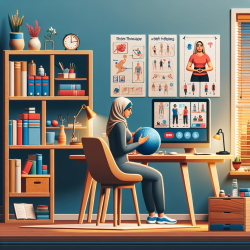Introduction
Adolescent Idiopathic Scoliosis (AIS) is a prevalent condition affecting the spinal alignment of adolescents, with potential long-term consequences if not managed effectively. Traditional treatment methods in North America have largely focused on observation and bracing, often overlooking the potential benefits of exercise. However, recent research, particularly the study titled "Schroth Physiotherapeutic Scoliosis-Specific Exercises Added to the Standard of Care Lead to Better Cobb Angle Outcomes in Adolescents with Idiopathic Scoliosis," highlights the significant impact of incorporating Schroth exercises into standard care.
The Study at a Glance
The randomized controlled trial conducted by Schreiber et al. (2016) involved 50 adolescents with AIS, comparing outcomes between those receiving standard care alone and those receiving standard care plus Schroth exercises. The primary outcome measured was the change in Cobb angle, a critical indicator of scoliosis severity.
Key Findings
- Significant Improvement: The Schroth exercise group showed a significant reduction in the Largest Curve by 3.5° compared to the control group, indicating a substantial improvement in spinal alignment.
- Enhanced Outcomes with Compliance: The per protocol analysis revealed even greater improvements, emphasizing the importance of adherence to the exercise regimen.
- Broader Implications: The study suggests that incorporating Schroth exercises can lead to better outcomes, potentially reducing the need for surgical intervention.
Implications for Practitioners
For practitioners in the field of speech-language pathology and related disciplines, integrating data-driven approaches like the Schroth exercises into treatment plans can enhance patient outcomes. The study underscores the importance of personalized care and the potential of exercises to complement traditional methods. Practitioners are encouraged to consider the following:
- Adopt Evidence-Based Practices: Utilize the findings from this study to advocate for the inclusion of Schroth exercises in treatment plans for AIS patients.
- Monitor and Encourage Compliance: Ensure patients adhere to exercise regimens to maximize benefits, as compliance significantly influences outcomes.
- Further Research: Engage in or support further research to explore long-term benefits and refine exercise protocols.
Conclusion
The integration of Schroth exercises into the standard care for AIS represents a promising advancement in scoliosis management. By reducing Cobb angle severity, these exercises not only improve physical outcomes but also enhance the quality of life for adolescents. Practitioners are encouraged to embrace these findings and consider further research to optimize treatment strategies.
To read the original research paper, please follow this link: Schroth Physiotherapeutic Scoliosis-Specific Exercises Added to the Standard of Care Lead to Better Cobb Angle Outcomes in Adolescents with Idiopathic Scoliosis – an Assessor and Statistician Blinded Randomized Controlled Trial.










